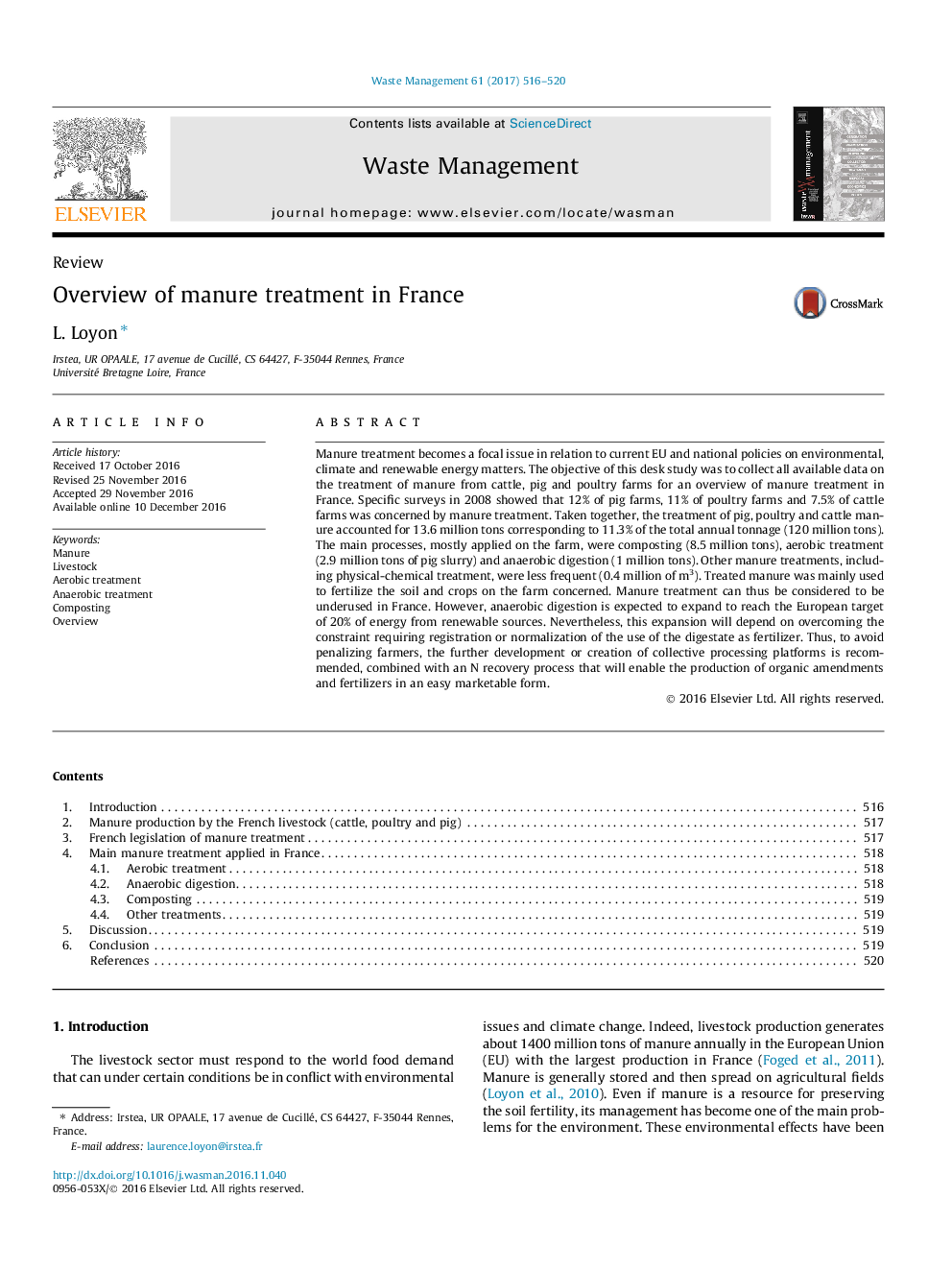| کد مقاله | کد نشریه | سال انتشار | مقاله انگلیسی | نسخه تمام متن |
|---|---|---|---|---|
| 5756987 | 1622625 | 2017 | 5 صفحه PDF | دانلود رایگان |
- French manure is treated mainly to limit the nitrogen (N) and phosphorus (P) surplus.
- Manure treatment accounts for 13.6Â million tons (11.3% of the total annual tonnage).
- Anaerobic digestion should increase under the European target of 20% of energy from renewable sources.
Manure treatment becomes a focal issue in relation to current EU and national policies on environmental, climate and renewable energy matters. The objective of this desk study was to collect all available data on the treatment of manure from cattle, pig and poultry farms for an overview of manure treatment in France. Specific surveys in 2008 showed that 12% of pig farms, 11% of poultry farms and 7.5% of cattle farms was concerned by manure treatment. Taken together, the treatment of pig, poultry and cattle manure accounted for 13.6 million tons corresponding to 11.3% of the total annual tonnage (120 million tons). The main processes, mostly applied on the farm, were composting (8.5 million tons), aerobic treatment (2.9 million tons of pig slurry) and anaerobic digestion (1 million tons). Other manure treatments, including physical-chemical treatment, were less frequent (0.4 million of m3). Treated manure was mainly used to fertilize the soil and crops on the farm concerned. Manure treatment can thus be considered to be underused in France. However, anaerobic digestion is expected to expand to reach the European target of 20% of energy from renewable sources. Nevertheless, this expansion will depend on overcoming the constraint requiring registration or normalization of the use of the digestate as fertilizer. Thus, to avoid penalizing farmers, the further development or creation of collective processing platforms is recommended, combined with an N recovery process that will enable the production of organic amendments and fertilizers in an easy marketable form.
Journal: Waste Management - Volume 61, March 2017, Pages 516-520
